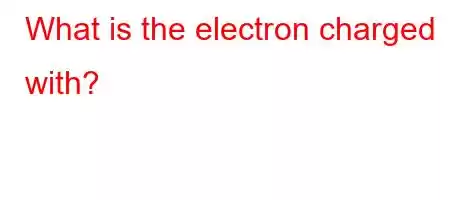Object What is the electron charged with?
Contents
What is the electron charged?
In fact, all particles (atoms and molecules) in nature contain equal numbers of protons (positively charged elementary particles) and electrons (negatively charged elementary particles).
What are examples of atoms?
Samples of Atoms: Examples of molecules and compounds include salt (NaCl), water (2 O including H) and methanol (CH 2 OH). Electrically charged atoms are called ions. They are still types of atoms. Monoatomic ions including H + and O are atoms that are not 2. There are also molecular ions (for example, ozone, O3-).
Do atomic number and number of electrons equal?
Since the atomic number given above the element symbol is also equal to the number of protons, the difference of these two numbers gives the neutron number of the element….Atomic number
← Atomic number (proton number) 40 ← Element weight (Relative atomic mass)What is an electron atom?
What is Electron: A subatomic particle with a negative (-) fundamental electric charge is called an electron. It is denoted by the symbols e- or β-. They belong to the group of subatomic particles called leptons. Since the electron has no components or a known substructure, they are considered as fundamental particles.
What is the shape of an atom?
It is a very small particle that cannot be seen with the naked eye, and can only be used in a scanning tunneling microscope (atomic force microscope) etc. . can be examined with An atom has a cloud of negatively charged electrons surrounding the nucleus. The nucleus, on the other hand, consists of positively charged protons and uncharged neutrons.
What are atomic substances?
With the advancement of technology, it has been found that the smallest structure is not the atom, but the structures that make up the atom. . The structure of the atom consists of protons, neutrons and electrons. Protons and neutrons form the nucleus of the atom. There are electrons around the nucleus of the atom.
What is the atomic number of an atom equal to?The number of electrons in an uncharged form is also equal to their atomic number. That is, in this case, the number of electrons = the number of protons = the atomic number is expressed as.
How to find the atomic number of an atom?The number of electrons in the uncharged state is also equal to the atomic numbers. In other words, in this case, the number of electrons = the number of protons = the atomic number.
What is the last orbit of an atom called?
The most important factor determining the conductivity of a substance is is the number of electrons in the final orbital of an atom. Electrons on this last orbital "Valence Orbit" are also called "Valence Electrons". Valence electrons are weakly bound to the atomic nucleus.
Read: 193


